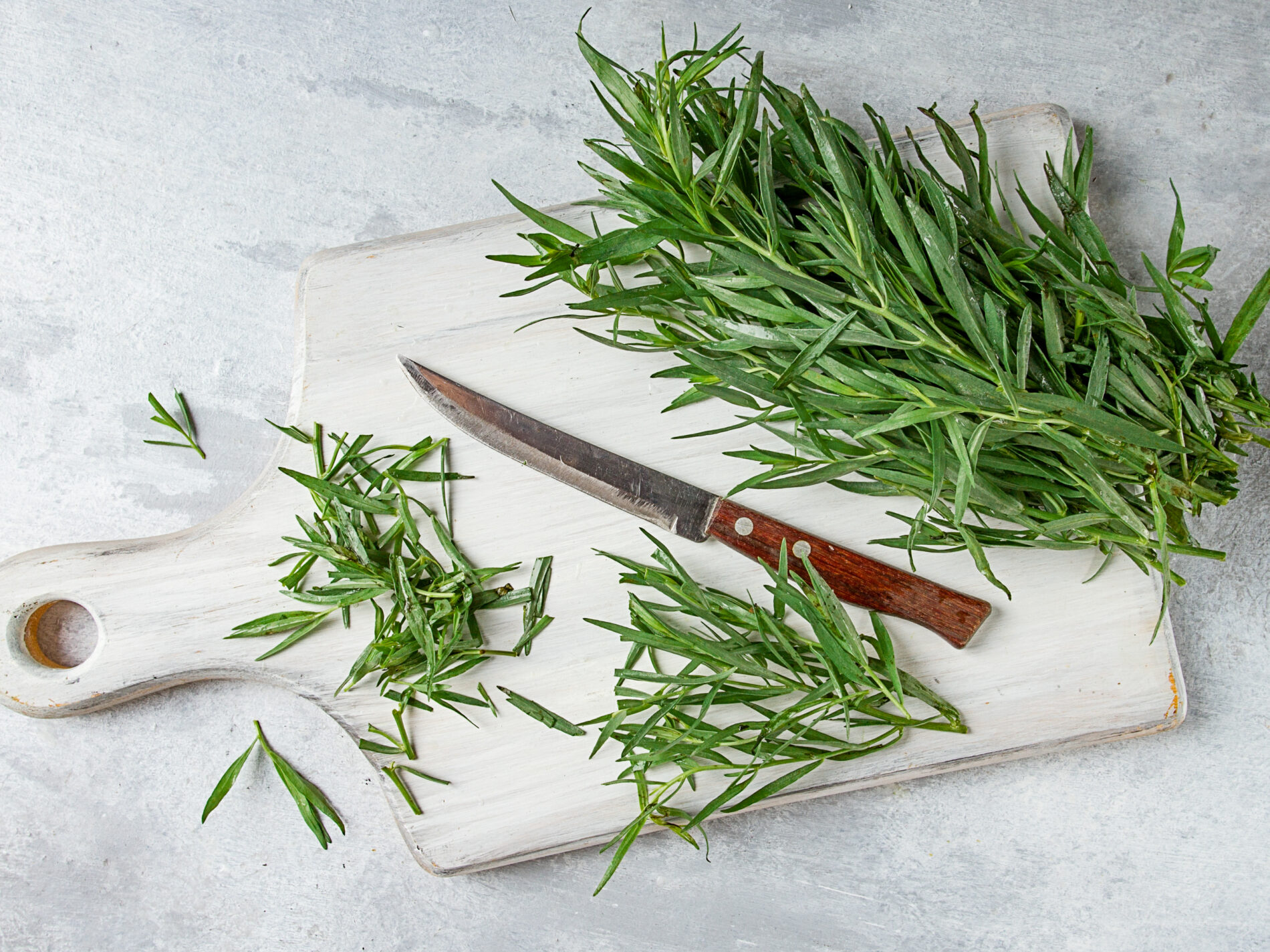Want to know about the coolest thing about tarragon? Apart from its flavour?
The plant is called ‘dragon’ in Swedish and Dutch. Why? Because of its Latin name Artemisia dracunculus. The latter part means “little dragon”. It’s a denomination derived from the coiled roots of the plant.
Tarragon is one of the four fines herbes. It’sa combination of culinary plants used in canonical French haute cuisine. Tarragon is mixed with chervil, chives and parsley. It’s used in sauces or eaten raw in salads.
Tarragon in an easily prepared dish
Try to cook fresh and easy lettuce salad. It won’t compete with your main course but elegantly accentuate it instead.
You need two heads of lettuce.
- Firstly remove the external wilted or discolored leaves. Then cut the core with a paring knife, collecting all the fresh and crunchy leaves. Wash and place them in a salad spinner to dry.
- Now rinse the tarragon, chervil, parsley and chives, dry and finely chop. You’ll need roughly 2 tbsp of each.
- Then finely chop 1 shallot and place in a bowl.
- Toss in 1 tbsp of champagne or white wine vinegar with 2 tbsp of French mustard. Mix everything well.
- Next, gradually incorporate walnut oil (you’ll need approximately 3 tbsp). Pour it in a thin trickle, whisking to create an emulsion.
- Season with salt and pepper.
- Then toss in the lettuce leaves, sprinkle with lemon, and mix again.
The fine herbs emulsion will transform the lettuce into a refreshing accompaniment to your entrée. It definitely will stand out on any occasion. And your guests will surely be happy.
Tarragon is a great accomplice to main dishes
Let’s try another classic French recipe where tarragon truly shines. It is bearnaise (from French “from Bearn”) sauce, a younger brother of hollandaise. It adds the special oomph to any protein, from poached scallops to broiled chicken or seared steak.
- Set a small saucepan over medium heat.
- Add 60 ml of white wine vinegar and 60 ml of dry white wine.
- Toss 1 finely minced shallot, 1 tbsp of finely chopped tarragon and ½ tsp of ground pepper.
- Bring to a boil, and then reduce to a simmer. Hold for 3-4 minutes until the liquid is reduced to 2 tbsp. Remove from the heat and set aside. Once cooled, add 1 tbsp of water and 2 egg yolks to the mixture.
- Next step, fill another saucepan ⅓ full with water and place it over medium heat. Now pour the vinegar mixture into a small bowl that will fit atop the saucepan on the oven. This setup is called bain-marie or a double broiler. Reduce heat to low and set the bowl over. Whisk the yolk mixture until thickened and almost doubled in volume. It takes about 5-7 minutes.
- Now add 170 g / ¾ cup of unsalted melted butter (1 tbsp at a time), whisking slowly until emulsified. Watch over the mixture! You don’t want it to curdle into an omelette! Remove from the heat occasionally to cool a little and return it.
Ideally, you’ll get a smooth and emulsified sauce, not broken lumps of eggs floating in liquid. Add more chopped tarragon, serve immediately.











What do you think?